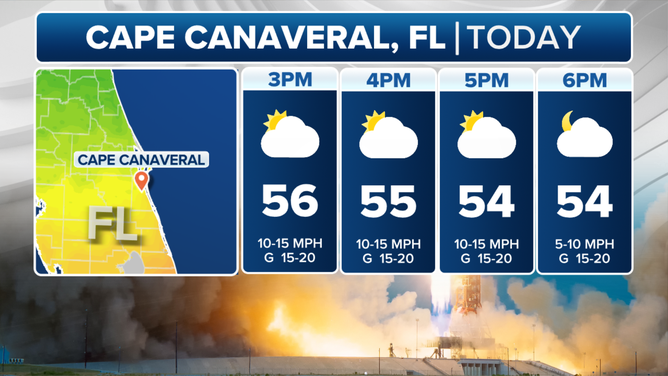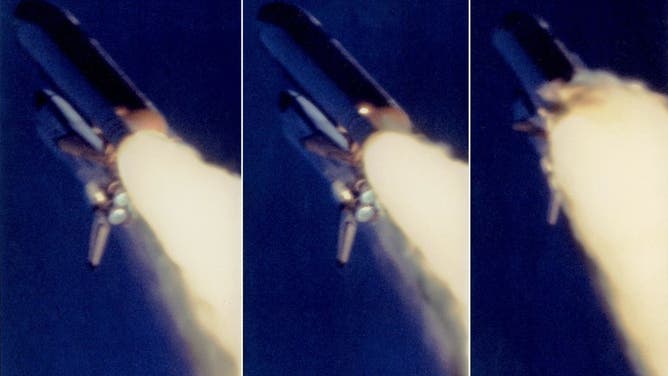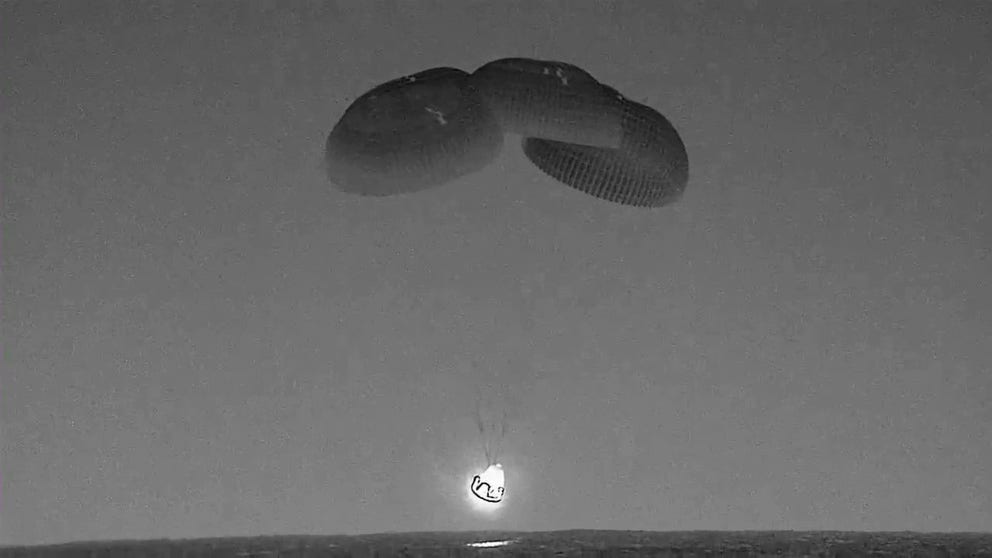How air temperatures play a role in human spaceflight launches
Every rocket has weather constraints that it can safely launch within. These weather criteria include temperature, cloud cover, precipitation, liftoff winds and lightning. This is why launch providers like SpaceX monitor the forecast so closely in the time leading up to liftoff.
SpaceX Dragon spacecraft returns to Earth with 4 astronauts
File video: The Dragon capsule zoomed by Florida on Monday morning returning to Earth with four astronauts after a 6-month mission on the International Space Station. The spacecraft could be seen on both Florida coasts and safely splashed down in the Atlantic Ocean.
KENNEDY SPACE CENTER, Fla. – Arctic air has dropped temperatures across the U.S. in January 2024, bringing some of the coldest temperatures to NASA's Kennedy Space Center since SpaceX began launching commercial human spaceflights in 2020.
SpaceX was set to launch four private astronauts as part of the Axiom Space Mission 3 (Ax-3) on Jan. 17; however, the launch was delayed to Jan. 18 at 4:49 p.m. ET when a Falcon 9 rocket will launch the four humans in the Crew Dragon spacecraft to the International Space Station.
If the launch went as planned on the original launch date, it would have occurred during the coldest temperatures since SpaceX began launching humans more than three years ago. When the Space Shuttle Program ended in 2011, NASA paid Russia to launch American astronauts to the ISS until May 2020, when SpaceX began launching NASA astronauts under the space agency's Commercial Crew Program.
RECORD-BREAKING SPACEX ROCKET BOOSTER TOPPLES IN ROUGH SEAS AFTER 19TH LANDING
A cold front moved in overnight Wednesday, dropping temperatures in Florida to near freezing in some areas of the Sunshine State and into the upper 40s for Central Florida. The National Weather Service office in Melbourne issued Wind Chill advisories for Central Florida through Wednesday morning that have since expired.
Around 5 p.m. Wednesday, the FOX Forecast Center said the temperatures would be 54 degrees with winds between 10 and 15 mph and stronger gusts up to 20 mph. By Thursday, temperatures at Kennedy Space Center will be back in the 70s, closer to average for January.

Cape Canaveral hourly forecast around the Ax-3 launch.
(FOX Weather)
SpaceX has successfully launched 11 human missions to the ISS or orbital space for NASA and its international partners, Axiom Space and the private Inspiration4 mission. A review of National Weather Service data on those 11 launch dates shows Wednesday's launch could have been the first with temperatures in the 50s. With wind gusts up to 20 mph, temperatures could feel closer to 40 degrees.
While 50 degrees sounds like a mild day to Florida's northern neighbors dealing with single-digit or negative temperatures, the chilly forecast is important for launching rockets.
Every rocket has weather constraints that it can safely launch within. These weather criteria include temperature, cloud cover, precipitation, liftoff winds and lightning.
This is why launch providers like SpaceX monitor the forecast closely in the time leading up to liftoff.
NASA LAUNCHES GIANT BALLOON FROM ANTARCTICA TO MAP OUT MILKY WAY
When asked about the cold forecast on a call with reporters, SpaceX Senior Director of Human Spaceflight Benji Reed said he couldn’t share the exact temperature constraints for SpaceX's Falcon 9 rocket but said they were monitoring the weather.
"We want to ensure we can launch safely and with plenty of margin regardless of temperature, humidity, precipitation and wind and thunder and lightning," Reed said. "So we’re keeping an eye on it, and we’re watching the weather closely."
Coldest space shuttle launch turns deadly
The Challenger disaster is the only deadly spaceflight in American history tied to the weather. It was a bitterly cold January day for Florida on launch day, with air temperatures at 36 degrees for the Jan. 28, 1986 launch. This was 15 degrees colder than any previous shuttle launch, according to NASA.
The investigation into the Challenger explosion found that the loss was caused by a failure in the joint between two lower segments of a solid rocket motor. An O-ring seal returned to its uncompressed shape during the 36 degrees Fahrenheit weather, causing the joint to fail.

Sequential photos, released 15 February 1986, taken by NASA during the catastrophic flight of the Space shuttle Challenger, 28 January 1986, show a firey plume excaping from the right solid rocket booster and growing toward an explosion. 75 seconds after its launch, the Space shuttle Challenger blew up killing all seven crew. (Photo by - / NASA / AFP) (Photo by -/NASA/AFP via Getty Images)
As a result, the space shuttle solid rocket motor booster seal and joint were redesigned to withstand all weather conditions for liftoff. There have also been developments in O-rings used on rocket boosters today that are designed with more temperature-hardy materials.
Even with improvements in engineering and materials, temperature still plays a role in rocket launches today.
NASA's Space Launch System rocket under the Artemis program cannot launch if the temperature at 132.5 feet is between 38 and 49 degrees Fahrenheit, depending on the wind and relative humidity. The rocket will not launch if temperatures are too hot, exceeding 94.5 degrees at 132.5 feet.
